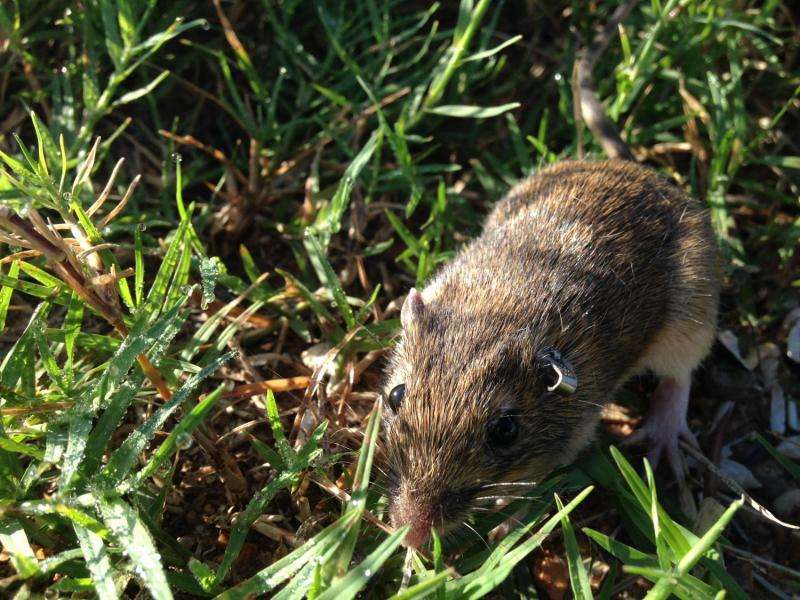Are red imported fire ants all bad?

Red imported fire ants have earned a justifiably bad rap across the south and most Texans would be hard put to name a single redeeming quality the ants have.
But a team of Texas A&M scientists and a colleague from the U.S. Fish and Wildlife Service's Attwater Prairie Chicken National Wildlife Refuge have published a manuscript offering a glimmer of redemption for the invaders. The paper, "Decreased small mammal and on-host tick abundance in association with invasive red imported fire ants, Solenopsis invicta," was published in the scientific journal Royal Society Biology Letters on Sept. 21.
Dr. Jessica Light, associate professor and Texas A&M AgriLife Research scientist in the department of wildlife and fisheries sciences and corresponding author, said the work granted from the Texas A&M AgriLife Invasive Ant Research Management Project is the first to shed some potential positive light on a much-maligned invader.
"Red imported fire ants are known to predate lots of arthropods, including ticks," Light said. "They've also been shown to change the behavior of small mammals that want to avoid their stings. These small mammals often serve as reservoirs or carriers of tick-borne pathogens that can cause human and animal disease. We wondered if this invasive ant could change the ecosystem in a way to reduce tick-borne disease risk.
The team specifically looked at the effect of red imported fire ants on small mammals, of which many species are carriers of pathogens or microorganisms such as bacteria and viruses capable of causing disease in humans and animals, she said. They also looked at the ticks the animals harbor, which are known vectors of these pathogens. And finally, they looked at the pathogens themselves.
"On plots where we experimentally reduced the ant populations, rodents were nearly twice as abundant as they were on sites with the ants, the control plots," she said. "The rodents were also three times more likely to harbor ticks on plots with reduced fire ants and one species, the fulvous harvest mouse, had a 27-fold increased tick load.
"While testing these ticks for multiple pathogens, we documented one human pathogen, Rickttsia parkeri, which causes a mild form of spotted fever. Given that we detected one human pathogen in this ecosystem, the reduced number of ticks and small mammals in areas where ants are in high abundance could scale up to alter disease risk."
Light said the work was conducted in Southeast Texas on a private ranch in Goliad County and on the Attwater Prairie Chicken National Wildlife Refuge, www.fws.gov/refuge/attwater_prairie_chicken/, where ant suppression is part of their ongoing management plan to protect the endangered Attwater's prairie-chicken.
At each site, live traps were used on two treatment plots and two control plots for a total of 240 traps per site, which were run on two consecutive nights each month from June 2013 until September 2014. Sixty-four percent of the small mammals, mostly cotton rats, were captured on the fire ant-suppressed plots.
"While red imported fire ants have been demonstrated to have negative consequences on the environment such as reducing populations of the endangered Attwater's prairie-chicken, our work points out that a predatory arthropod such as this invasive ant species may be capable of impacting vector-borne disease transmission by altering vector and host dynamics in ways that could reduce disease transmission to both humans and animals."
More information: Adrian A. Castellanos et al. Decreased small mammal and on-host tick abundance in association with invasive red imported fire ants (), Biology Letters (2016). DOI: 10.1098/rsbl.2016.0463
Journal information: Biology Letters
Provided by Texas A&M University
















